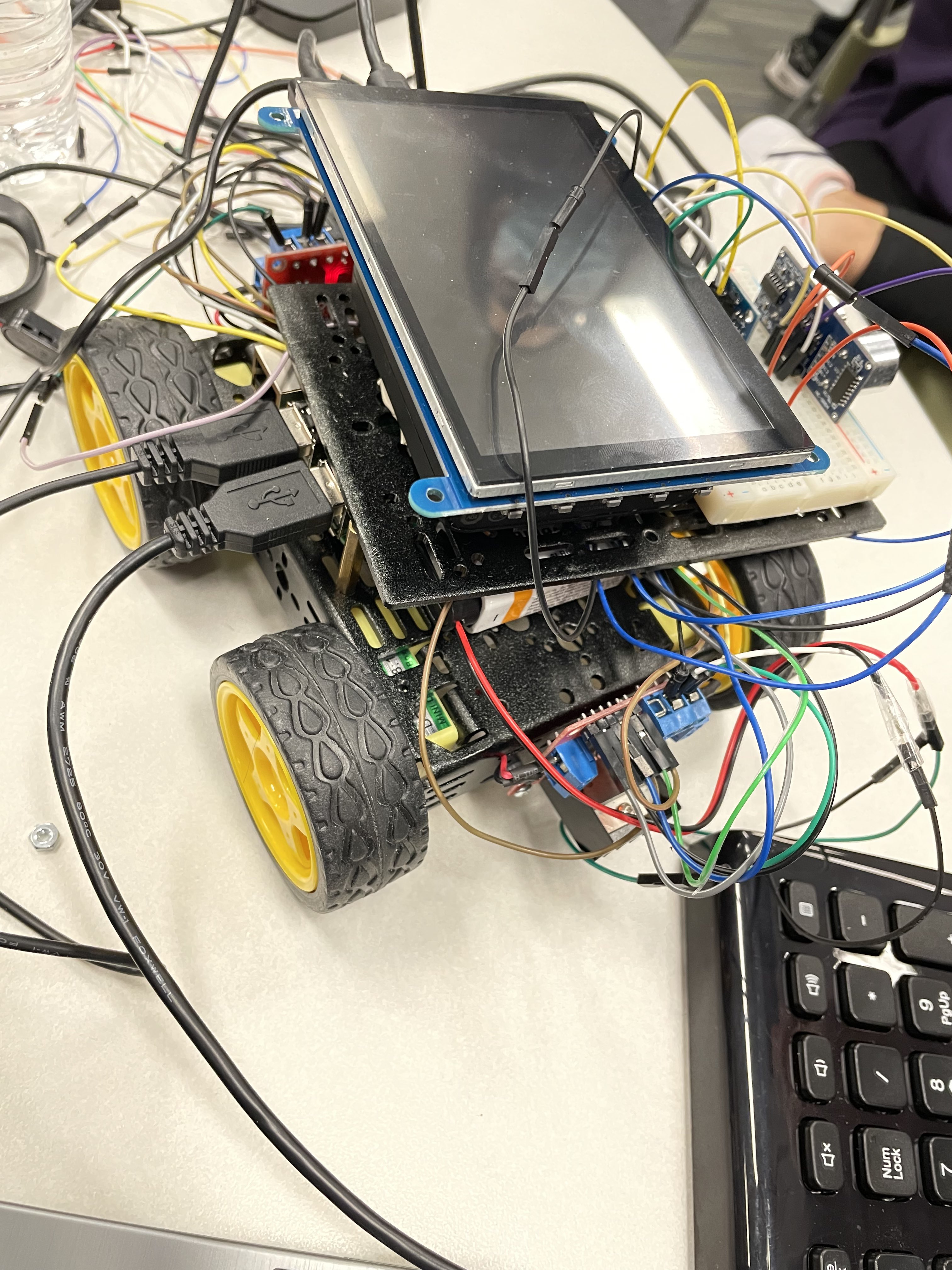Compliment Bot

Description as a Tweet:
Compliment Bot is a car that drives around, flattering people with complimentary phrases in an effort to lift their spirits. Its facial expression display couples with the speaking feature in order to contribute to this purpose.
Inspiration:
Before we began our project we knew we wanted it to involve software, since that is what we are most skilled at as a whole. We were inspired by some hardware workshops we attended at the beginning of the Hackathon. As a group, we enjoyed the workshops covering Arduino and knew we wanted to make a project involving hardware. The resulting project combines software to program our car’s movements and hardware that contributes to creating the car itself.
What it does:
Compliment Bot is capable of every common driving feature, such as driving forwards, backwards, to the left, and to the right. It features a facial display that is capable of switching between facial expressions in different situations.
How we built it:
In terms of hardware, we built this project using materials from the hardware station during the Hackathon. The most important element we got from the station was the 4WD Multi Chassis Kit which provided us with the body of the car, including wheels and motors. We also made use of 2 L298N motor drivers and Raspberry Pi 3 to program commands for the car to follow. It was supplied energy through a portable battery bank and the facial features are accessible through a 5” touchscreen display we mounted to the top of the car. Jumper cables connect the motors, motor drivers, battery bank, and Raspberry Pi 3. We made Bluetooth accessible on Raspberry Pi 3 in order to control the car with the app BlueDot. In terms of software, we made use of python in order to program Raspberry Pi to function the way we wanted.
Technologies we used:
- Python
- Raspberry Pi
- Other Hardware
Challenges we ran into:
We struggled to put Bluetooth on Raspberry Pi initially. Later on into the project, we also faced challenges when it came to figuring out how to control the car.
Accomplishments we're proud of:
After attending one of the workshops at the Hackathon, we were able to connect our Raspberry Pi 3 system to Wifi. Because of this accomplishment, we were able to connect the car to the app BlueDot, which we are using to manually control the car. We got a lot of other interesting software working by the end, as well, including text to speech (which we were able to integrate partially into the final project) and a machine learning model to identify eyes in scenes (which we did not end up having time to implement).
What we've learned:
We learned a lot about hardware while building our project. Compliment Bot made use of hardware we have never made use of before as well as skills that can be applied practically and academically in the future. Through the exhaustive variety of software and Python libraries that we had to go through, we also learned of the true extent of the in-depth and specific solutions available on free, educational websites.
What's next:
Though compliment bot did not achieve the lofty goals we dreamt of for it, we were happy with the final product on a whole, especially since we didn’t even expect to be doing a hardware hack initially. We think there is plenty of room for iteration and improvement on Compliment Bot’s design, especially in the missed opportunity for implementation of the facial recognition scripting that was working, but not installing quickly enough on the Raspberry Pi’s limited hardware.
Built with:
We built this project with help from GitHub, which fostered collaboration while we were programming the project's functionality. We also made use of a small tool kit, consisting of mostly smaller screwdrivers, in order to assemble the different hardware aspects properly.
Prizes we're going for:
- Best Hardware Hack
- Best Beginner Software Hack
- Best Beginner Hardware
- Best Mobile Hack
- Best Hardware Hack
Team Members
Paul Davis
Agneshka Rohra
Joelle Beck
Joseph Schwab
Kyle Lee
